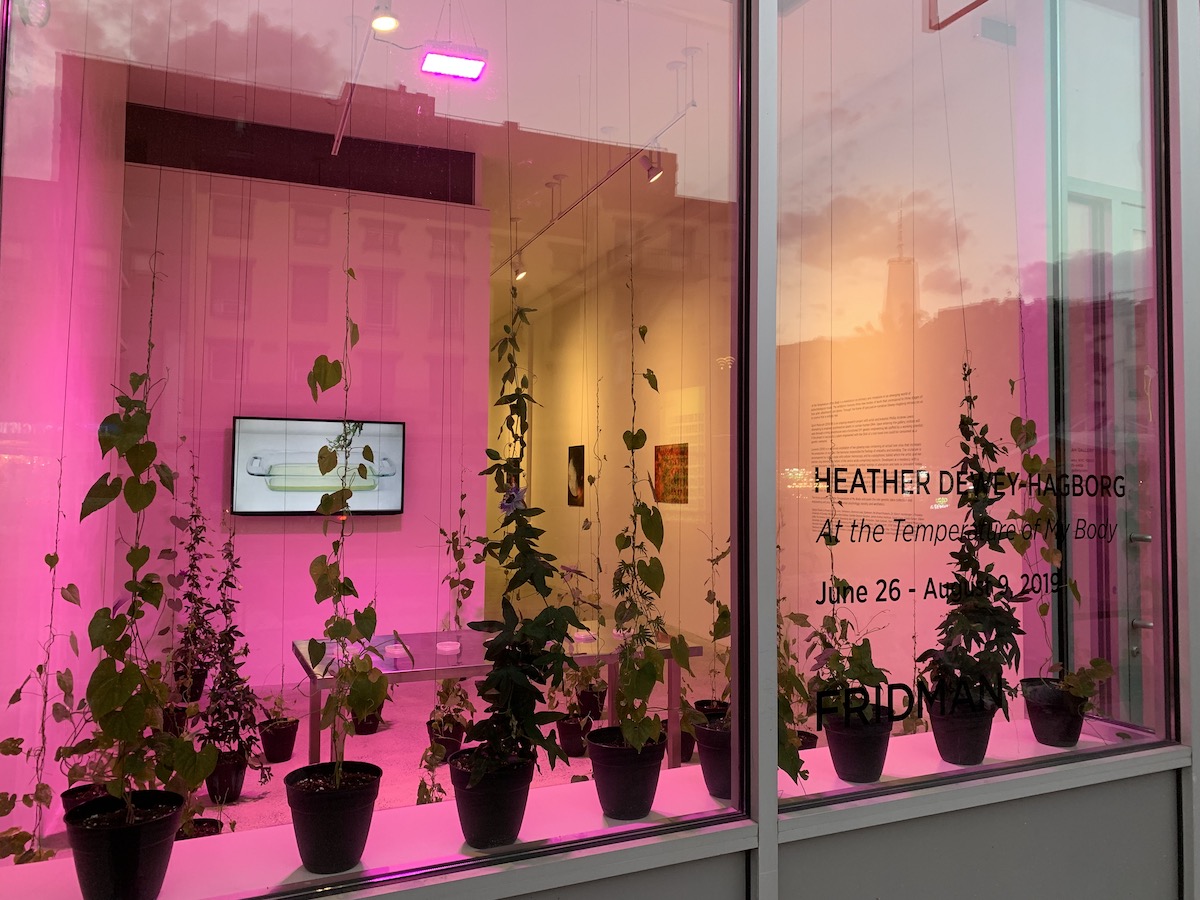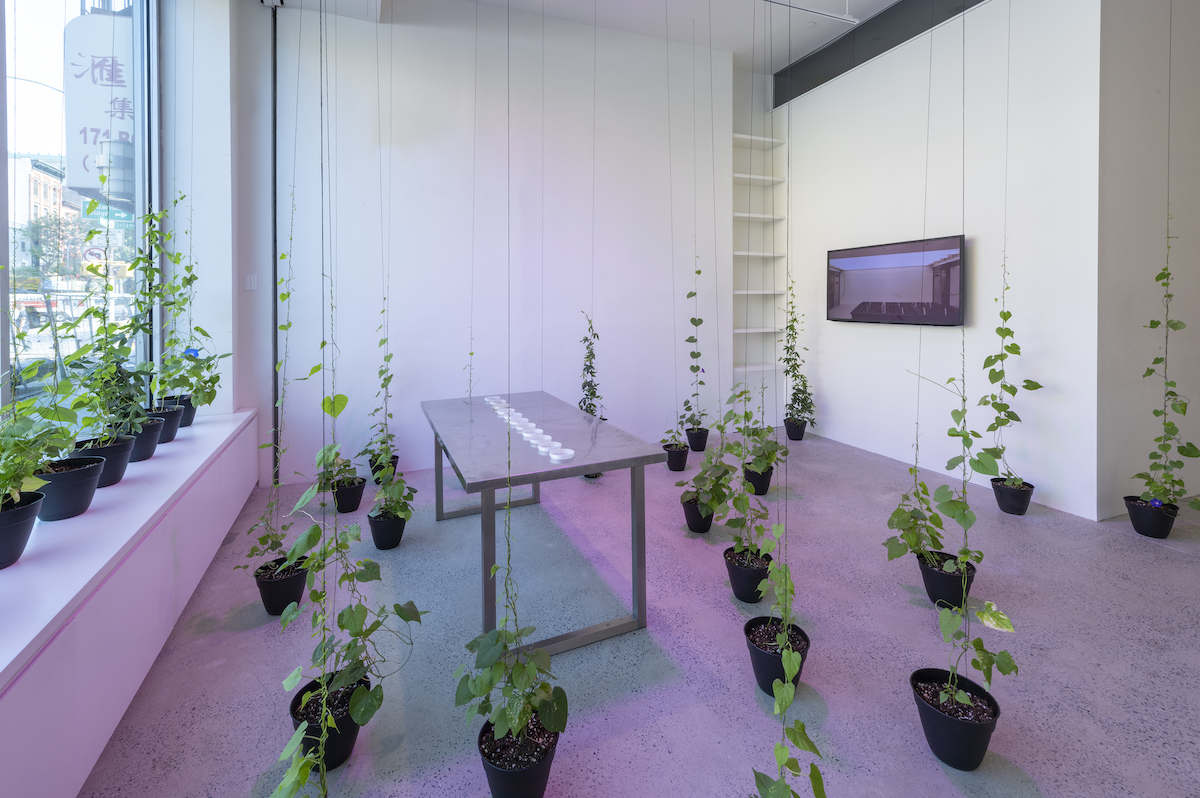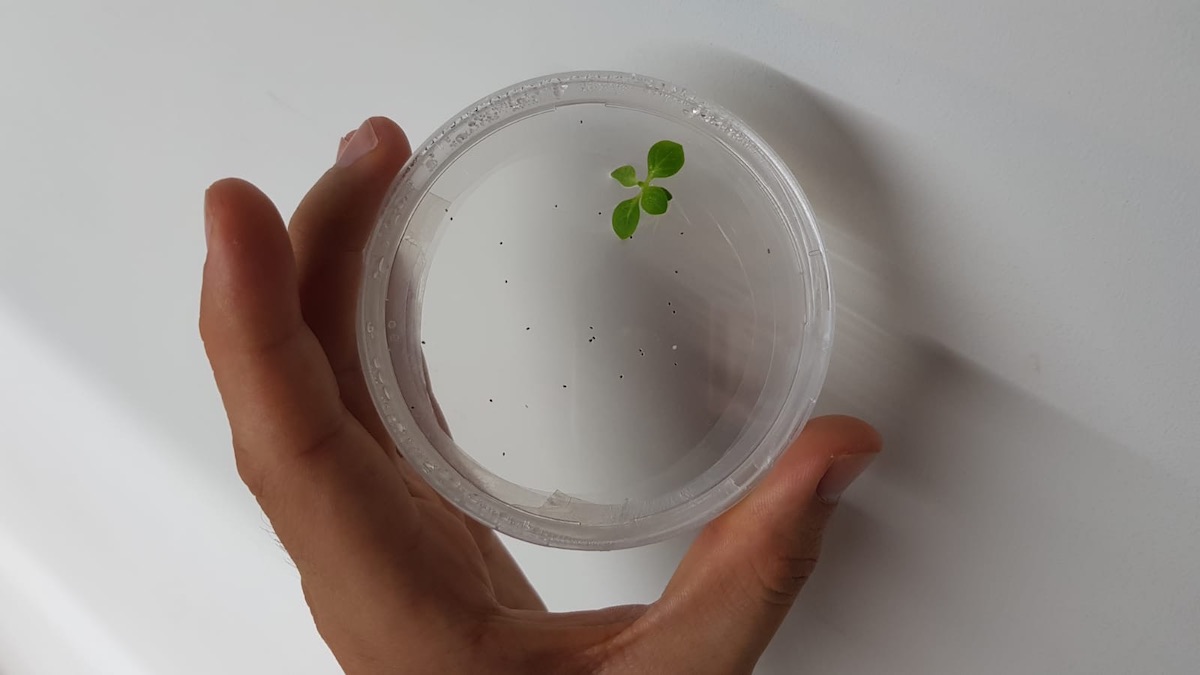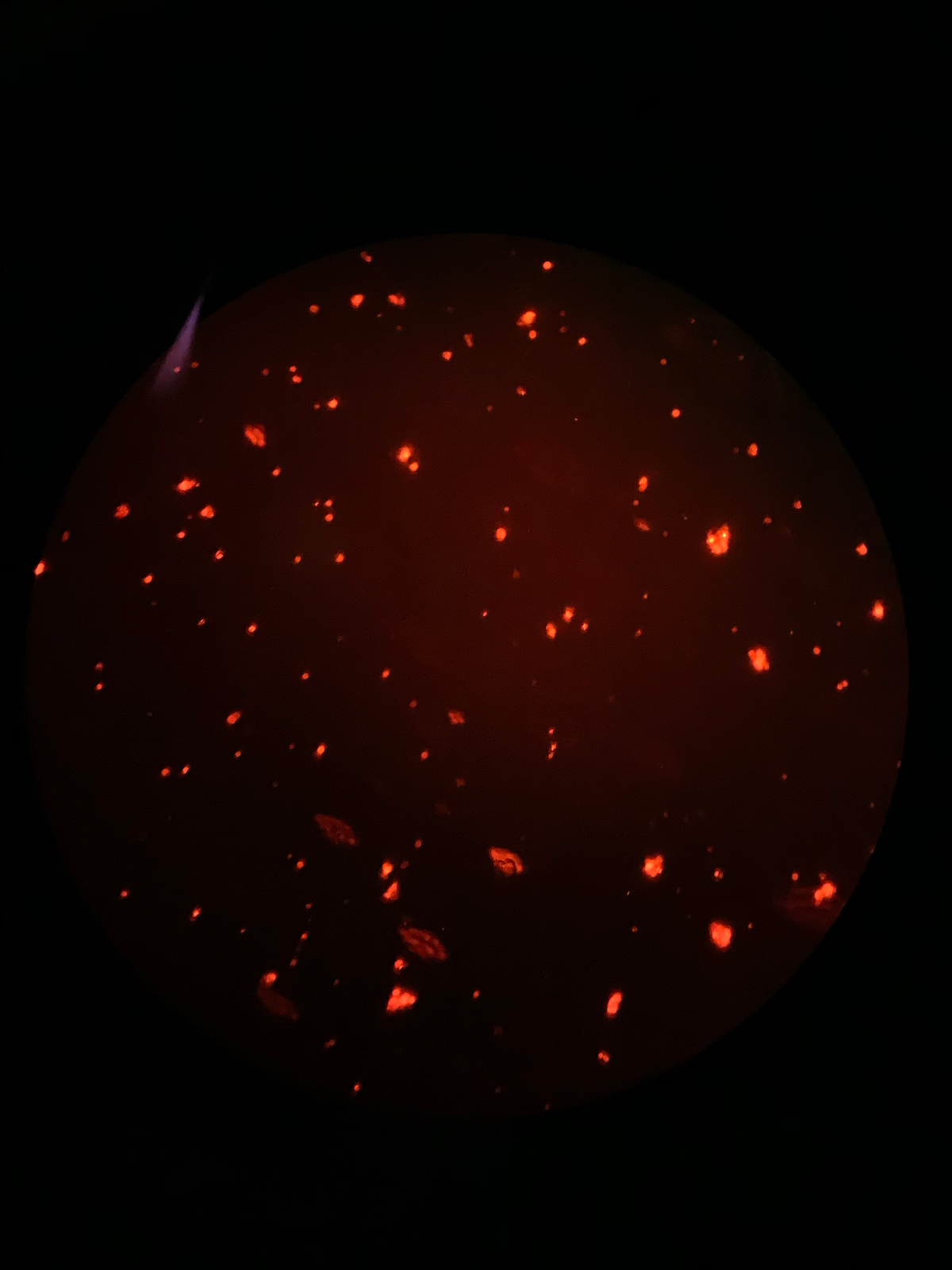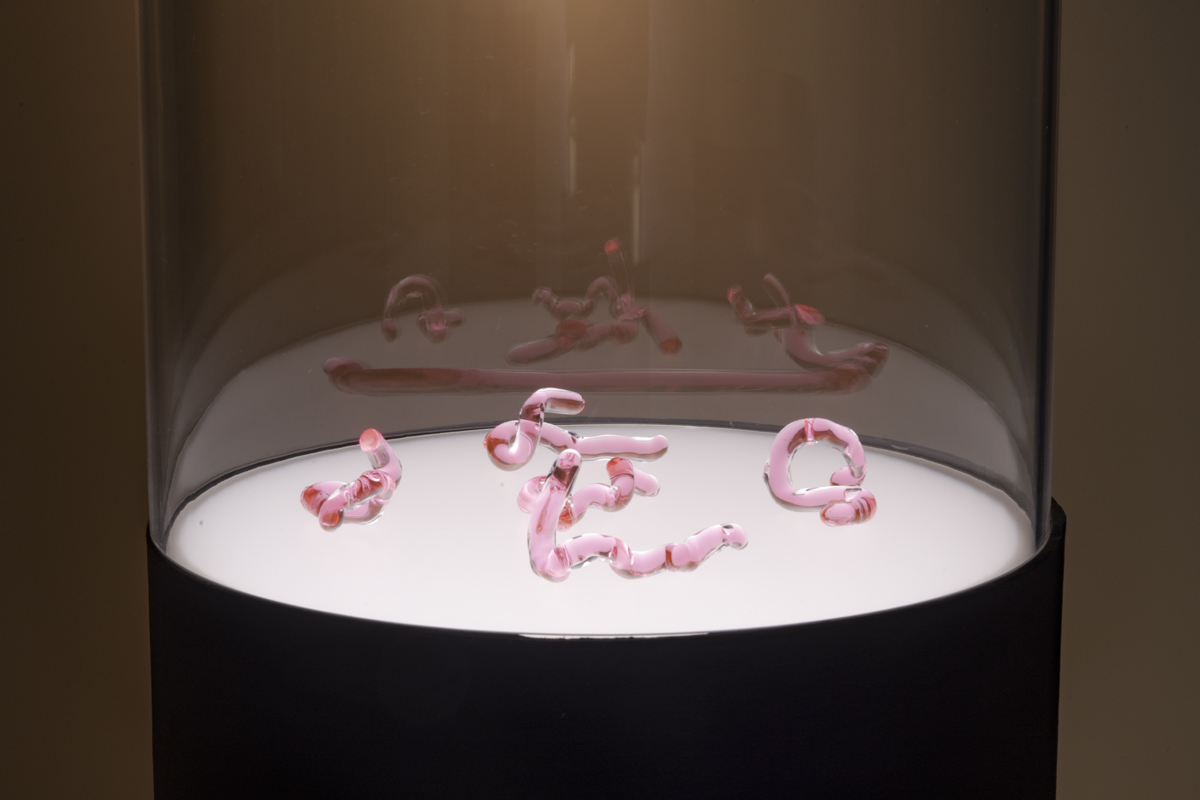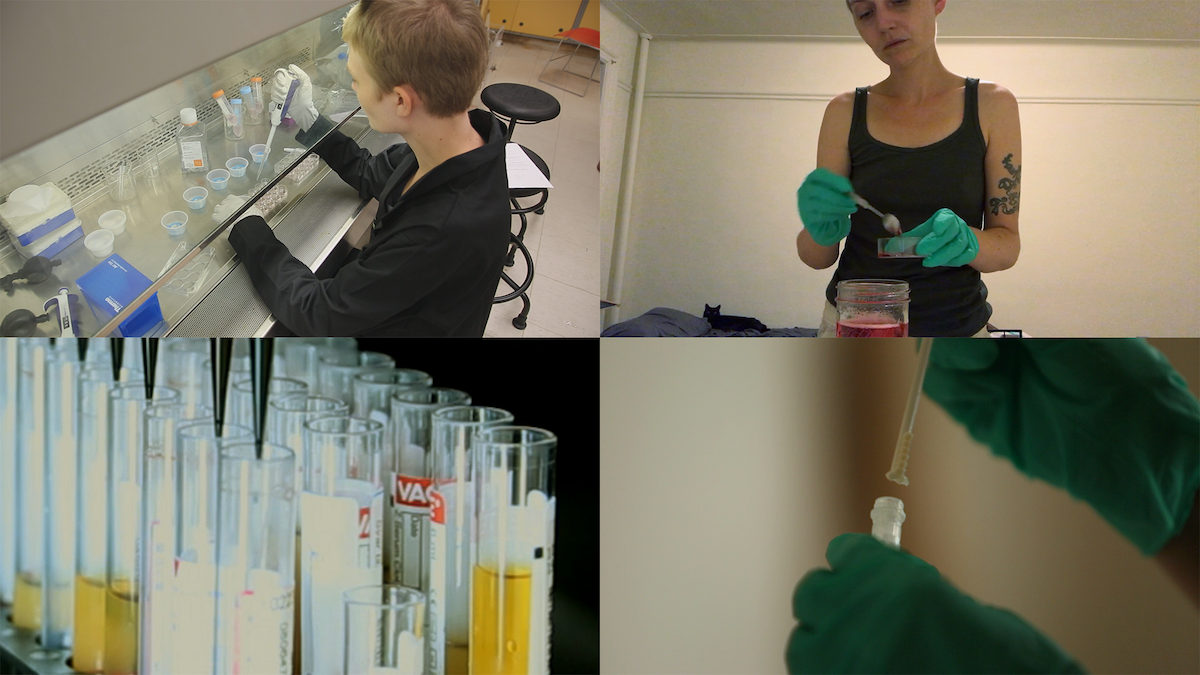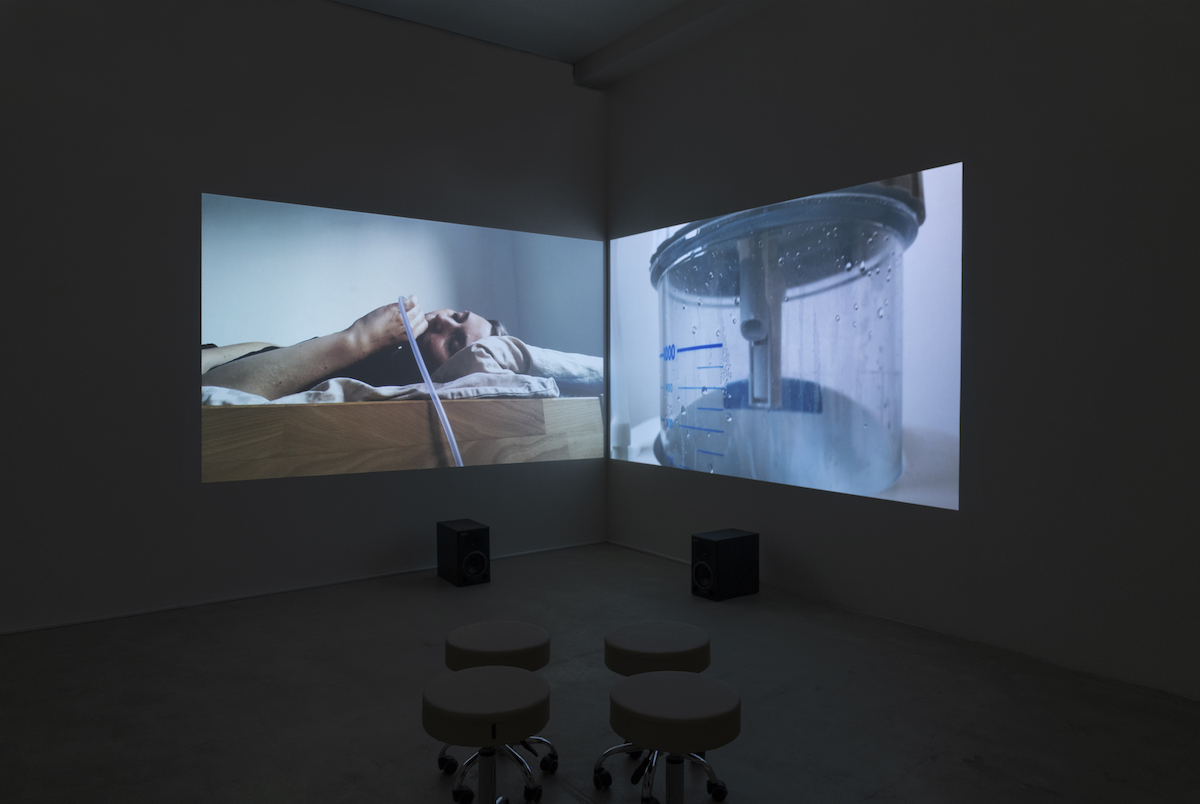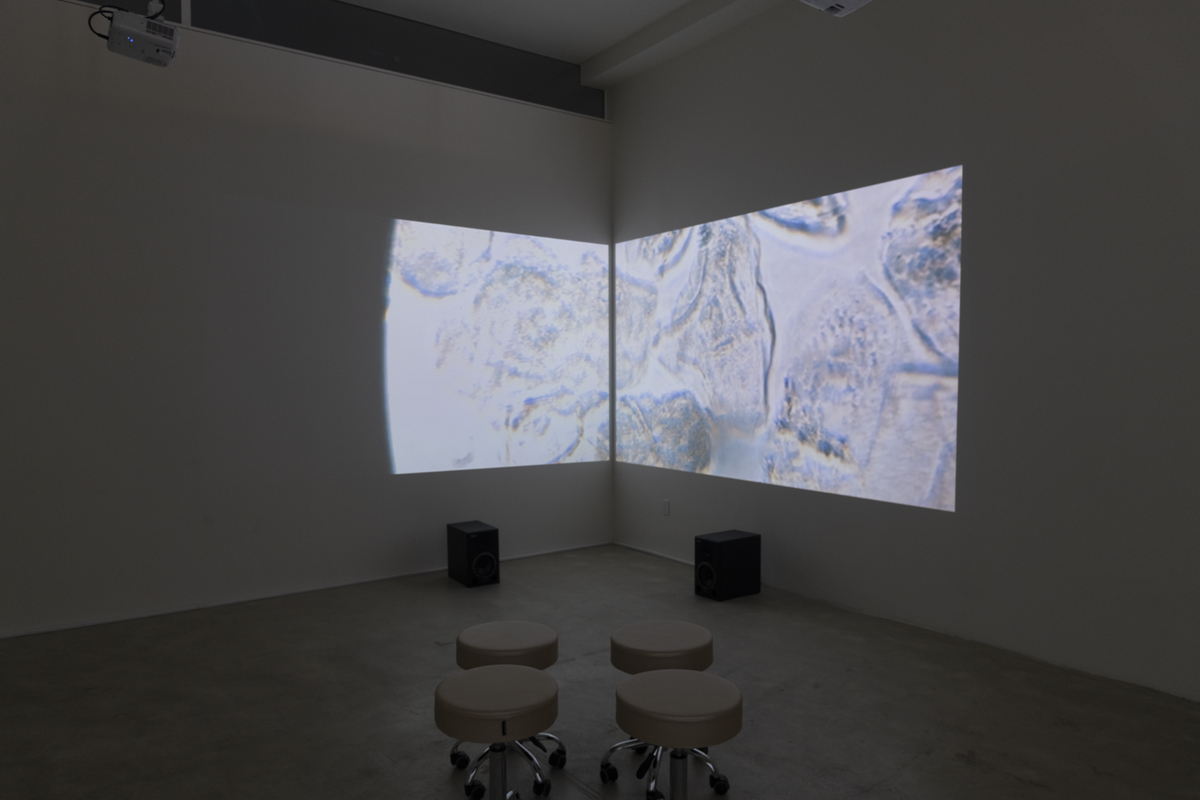At the Temperature of My Body
At the Temperature of my Body is a meditation on intimacy, desire, and spirituality, anticipating a world of emerging biotechnological rituals. The exhibition consists of three works corresponding to three phases of love: desire, attachment, and grief. Through the frame of speculative narrative Dewey-Hagborg introduces us to science that is entirely real.
T3511 is a four-channel video installation and collaboration with artist and filmmaker Toshiaki Ozawa. The narrative follows the true story of a biohacker who obtains an anonymous donor's saliva online and then proceeds to fall in love with them through their data, and through their cells, ultimately re-identifying the individual and tracking them down.
The work illustrates the vulnerability of genomic information, specifically that which is offered up to commercial companies for direct-to-consumer analysis, and shows how forensic procedures like those which tracked down the golden state killer, are increasingly accessible to anyone. T3511 is further a meditation on the intimacy of all data, and the ways in which biotechnology may mediate our future relationships, as digital technology does today.
Lovesick, a literal love virus, is the outcome of the artist's residency with Integral Molecular, a vaccine and drug discovery company based in Philadelphia. Together they invented a custom retrovirus which infects human cells with a gene that increases the production of oxytocin. The hormone oxytocin is implicated in feelings of love and bonding, monogamy and devotion, and the promotion of empathy and connection. The work is envisioned as an activist intervention, to spread affection and attachment and to combat the alienation and disconnection of the present. It presents a pro-active response to our post-Trump, post-Brexit crisis.
The Lovesick installation consists of ten vials of the glowing virus contained in small glass sculptures modeled from different energy states of the oxytocin molecule. This is accompanied by video and photographs of microscopic human cells expressing the infection, and a polyphonic ballad intoning the letters representing the proteins from which oxytocin is comprised. A meditative space is created in which the viewer can contemplate consuming a virus that will change their DNA forever.
Finally, Spirit Molecule poses the concept of a genetic memorial -- a psychoactive plant engineered to contain the DNA of a lost loved one that is consumed as a last journey of intimacy with the other. The work, a collaboration with artist and psychoactive botanist Phillip Andrew Lewis, is exhibited as an active experiment-in-progress consisting of a living greenhouse of plants with medicinal and psychoactive properties, and a functional do-it-yourself plant engineering lab. Throughout the course of the exhibition the artists and a collaborating scientist will attempt to engineer human DNA into common plants with psychoactive properties.
The video tells the speculative narrative of a character who loses a loved one and makes the decision to preserve their DNA in a psychoactive genetic memorial plant.
With additional support from Integral Molecular, University City Science Center BioArt Residency Program, Esther Klein Gallery, Mu Artspace, STRP, New Network Normal, and Abandon Normal Devices.
At the Temperature of My Body was on exhibition at Fridman Gallery from June 26 - August 9, 2019
Selected Press:
New York Galleries: What to See Right Now
New York Times
July 31, 2019
Artforum Critic's Pick: Heather Dewey-Hagborg, At the Temperature of My Body
Artforum
July 24, 2019
Heather Dewey-Hagborg on Intimacy and Biotechnology
Art in America
July 5, 2019
Heather Dewey-Hagborg mixes biotechnology and art
The Economist
July 15, 2019
An Unlikely Marriage of Science and Art
Hyperallergic
July 27, 2019
This Artist’s Medium Is DNA, and Her Current Project Is a Love Virus
Observer
August 3, 2019
Heather Dewey-Hagborg: At the Temperature of My Body
The Brooklyn Rail
July 9, 2019
An Artistic Exploration of Love, DNA, and Biohacking
GARAGE
July 8, 2019
